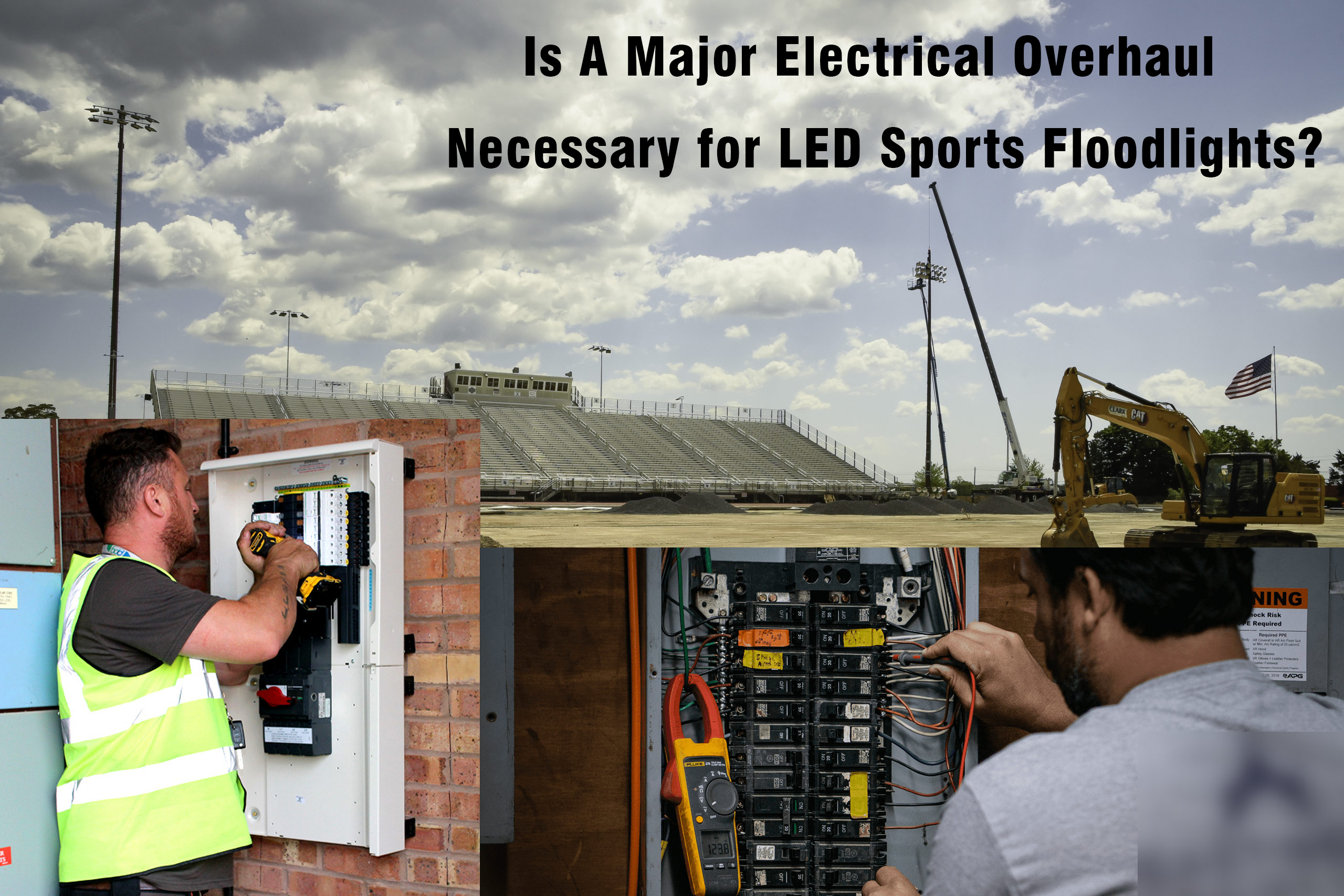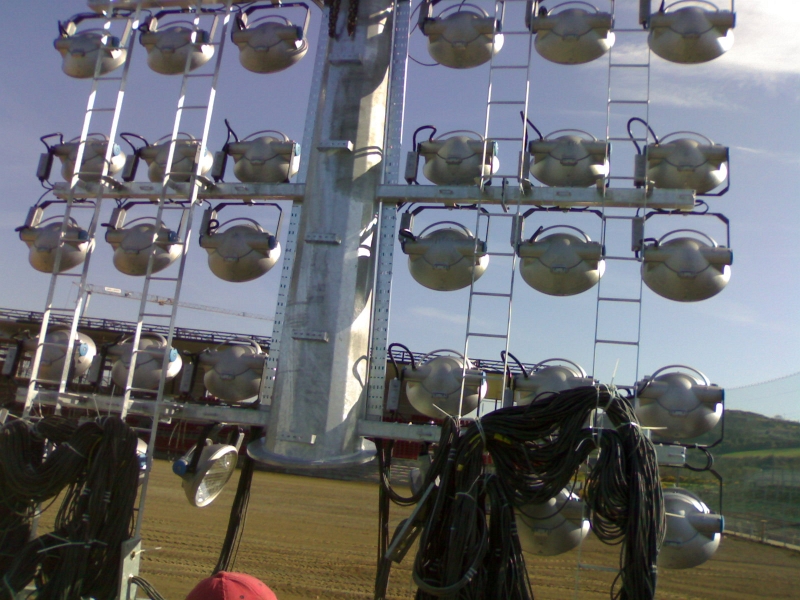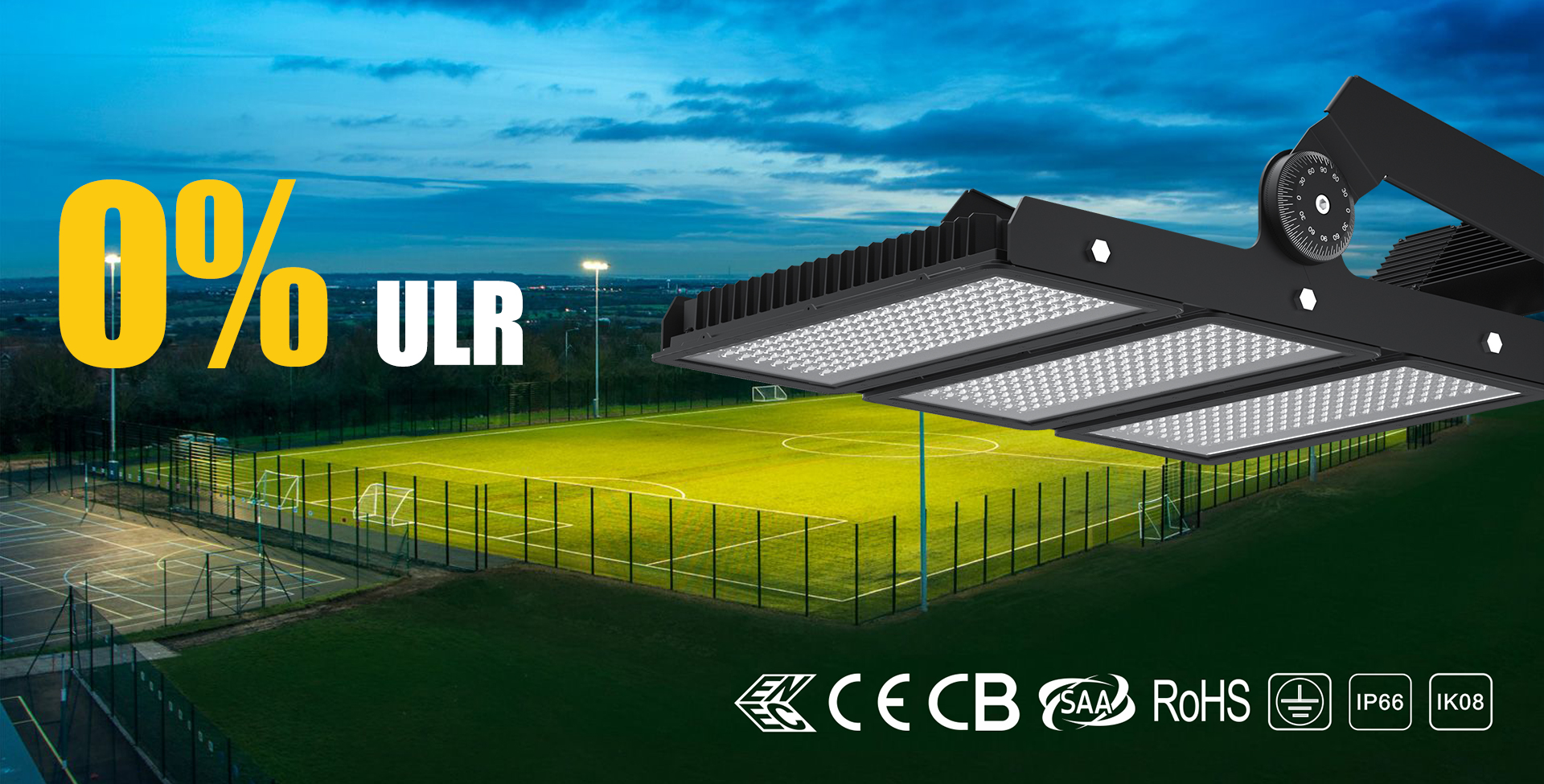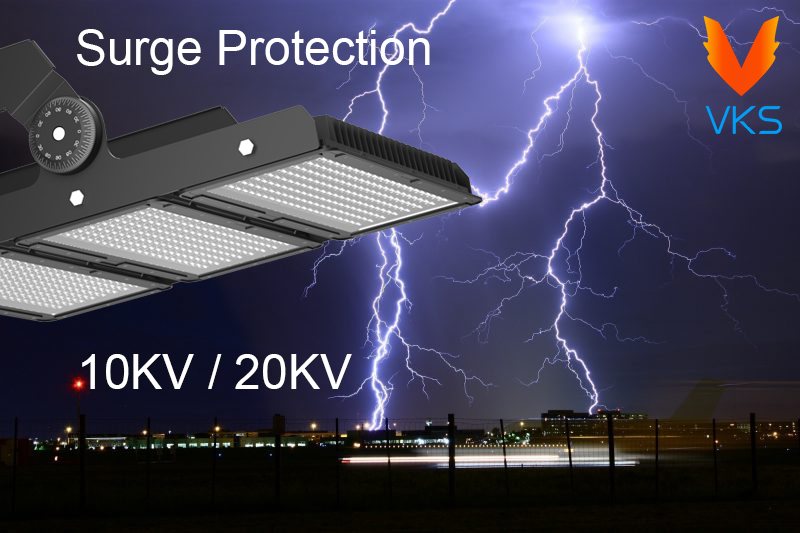Retrofit floodlight installations are often the preferred option for many organizations looking to upgrade to LEDs, as they allow for the use of existing mast infrastructure. This is a sensible business decision, considering the substantial expense typically associated with installing new lighting solutions. Thus, taking advantage of existing masts whenever feasible is an economically sound strategy.
LEDs’ lighter weight compared to metal-halide and sodium-vapour counterparts is a critical element enabling retrofit replacements, as it reduces the load on existing masts. We have previously explored this topic. However, we have yet to delve into the subject of cabling.

After all, maintaining a mast is one aspect, but have we considered the preservation of the internal wiring and electrical parts?
Should you retain your existing system or opt for a complete overhaul?
We frequently encounter inquiries concerning the necessity for an organization to update its electrical or cabling infrastructure when transitioning from antiquated lighting technologies to LED solutions.
In most instances, the response to this inquiry is straightforward: no. LED floodlights, especially LED sports floodlights, due to their reduced voltage demands compared to the older luminaires they’re replacing, typically don’t necessitate any new cabling or wiring installation within a mast. The existing infrastructure is adequate for the majority of situations.
Of course, this rule has significant exceptions and there are also other factors that need to be factored in:
• Wear and tear or harm may necessitate the replacement of cables.
Although the current electrical framework is not expected to present voltage-related challenges, it does not imply that other concerns should be disregarded. Any instances of breakage, significant wear, or damage due to flooding (a common problem at ports) could dictate that the mast’s internal cabling and wiring be replaced, irrespective of voltage considerations.
• In the event of a significant system upgrade, there might be a necessity for the introduction of new wiring.
Most retrofit installations typically involve an equal replacement, where old lighting fixtures are substituted with new ones on a direct one-to-one ratio. However, if the site experiences a substantial surge in the quantity of lighting fixtures – say from eight to 20 – it becomes highly probable that comprehensive rewiring will be essential. This is attributed to the increased voltage requirements that will be generated by the newly installed lights.

• In all circumstances, ballasts should be substituted with drivers.
A voltage and current regulator, referred to as a ballast, is employed by metal-halide light fixtures. Conversely, LEDs utilize a different technology known as a driver to accomplish the same purpose. Regardless of whether the internal wiring of a mast remains completely intact, during retrofit installations it’s invariably necessary to replace ballasts with drivers.
• It is highly advised to incorporate surge protection as a preventive measure.
A primary distinction between ballasts and drivers lies in the fact that drivers, unlike ballasts, are electronic power supplies. This characteristic makes them prone to fluctuations in power quality, such as voltage surges and dirty power spikes. Dirty power is predominantly experienced at the periphery of the electrical grid, suggesting that ports and airports are primarily affected by this issue.
In settings like these, utilizing surge protectors and remote monitoring tools can play a significant role in reducing the potential harm a power surge could inflict on the LED driver.
In a lighting system upgrade, attention is often primarily directed towards the luminaires. However, it’s crucial to remember that the cabling and electrical elements are integral to the system’s performance and durability. Consequently, engaging with a seasoned lighting partner for professional advice tailored to your unique requirements is highly recommended. They can guide you towards the most suitable strategy for your needs.
For more information, please don’t hesitate to contact us.
Website:www.vkslighting.com
Email: info@vkslighting.com
Post time: Dec-21-2023







